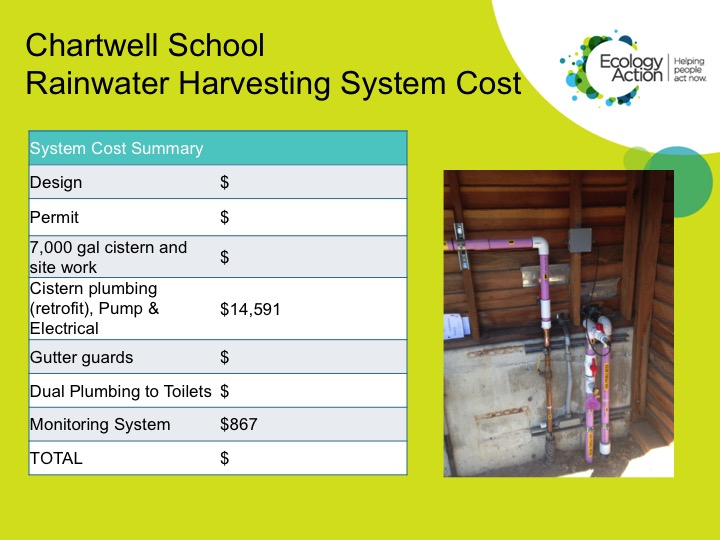CHARTSCH_CIS_01

CHARTSCH_CIS_02
1” of rain on metal roof = 6.500 gallon. Seaside/Marina average annual rainfall = 16”/year

CHARTSCH_CIS_03
The original system was constructed with the brand new school facility in 2007 as part of a LEED Platinum certification. Unfortunately the system failed and was abandoned within 3 weeks of the school’s grand opening. Although a 5 micron filter was in the specification, a 500 micron bag filter was installed by the contractor, which caused the UV system to fail due to sediment buildup on the quartz sleave. The system was abandoned from 2007-2015.

CHARTSCH_CIS_04

CHARTSCH_CIS_05
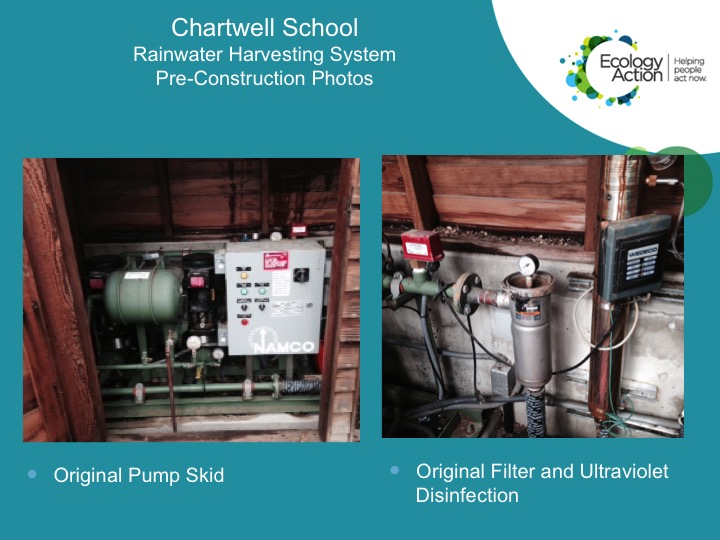
CHARTSCH_CIS_06
Photos were taken after 7 years of system in-operation.
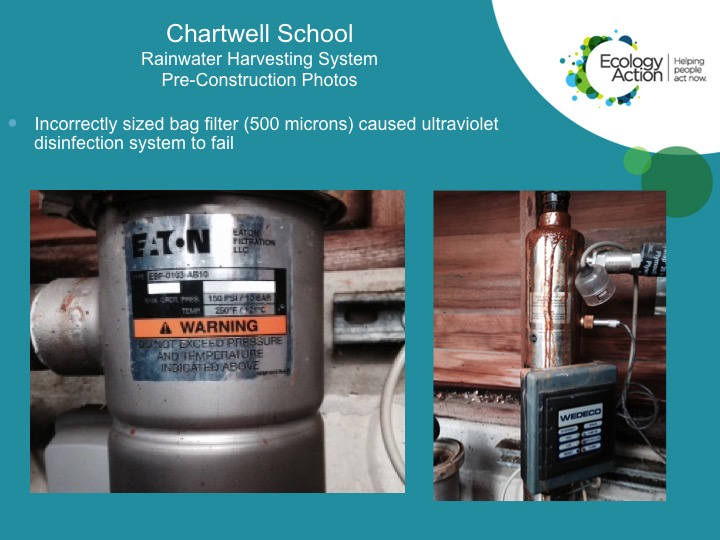
CHARTSCH_CIS_07
While the disinfection components were in disrepair, the water quality of rainwater cycling through the tank was excellent, as shown from February 2015 lab results.

CHARTSCH_CIS_08

CHARTSCH_CIS_09
No tree debris on metal roof contributes to excellent rainwater quality.
Note: ¼” mesh gutter guards do not meet the current 2016 CPC code requirement for maximum 1/16” debris screen before rainwater enters the tank.

CHARTSCH_CIS_10

CHARTSCH_CIS_11
When a float switch in the tank senses that rainwater in the tank has dropped to below 15%, a solenoid valve opens to allow municipal/potable water back into the piping to toilets. A reduced pressure zone backflow prevention device is installed immediately behind the solenoid valve to prevent back siphonage of rainwater into the potable drinking water supply. An manual emergency valve is installed to let potable water back into the pipes in the event of failure of the rainwater system’s electrical controls or a power outage.

CHARTSCH_CIS_12
E. coli is a subgroup of the fecal coliform group. Most E. coli bacteria are harmless and exist in the
intestines of people and warm-blooded animals. However, some strains can cause illness. The
presence of E. coli in a drinking water sample usually indicates recent fecal contamination. That
means there is a greater risk that pathogens are present.
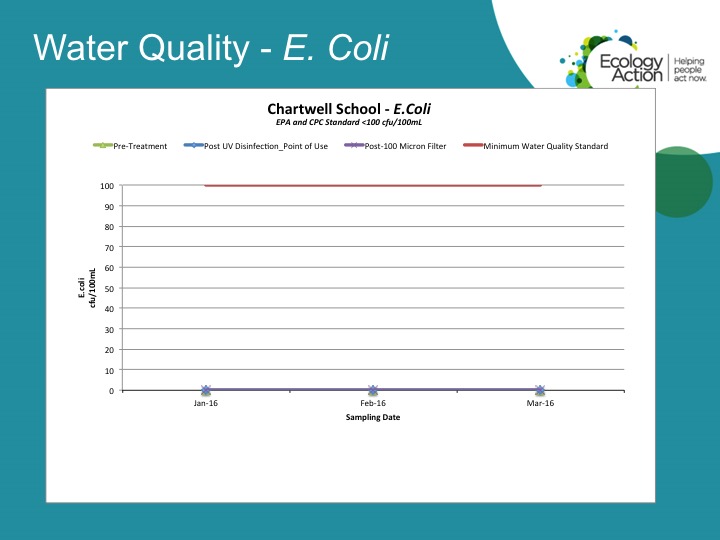
CHARTSCH_CIS_13
Total coliform bacteria are common in the environment (soil or vegetation) and are generally harmless.

CHARTSCH_CIS_14
Turbidity is a measure of water clarity how much the material suspended in water decreases the passage of light through the water. Suspended materials include soil particles (clay, silt, and sand), algae, plankton, microbes, and other substances. These materials are typically in the size range of 0.004 mm (clay) to 1.0 mm (sand). Turbidity can affect the color of the water.
NTU =NTU = Nephelometric Turbidity Units
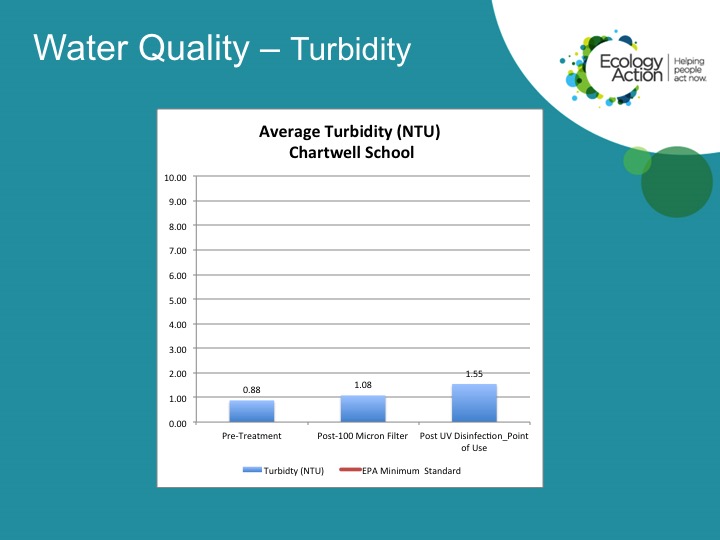
CHARTSCH_CIS_15
Annual average indoor water use at Chartwell School is 49,817 gallons/year. Toilet flushing accounts for 26,952 gallons/year, or 54% of total indoor use. Rainwater offsets 36% of total average indoor water use, and 67% of annual water used for toilet flushing.
In 2016, Marina Coast Water District charged $2.97/ccf for this customer. This amounts to a water saving cost of $71/year, which is about enough money to replace the UV bulb and 5 micron filter.
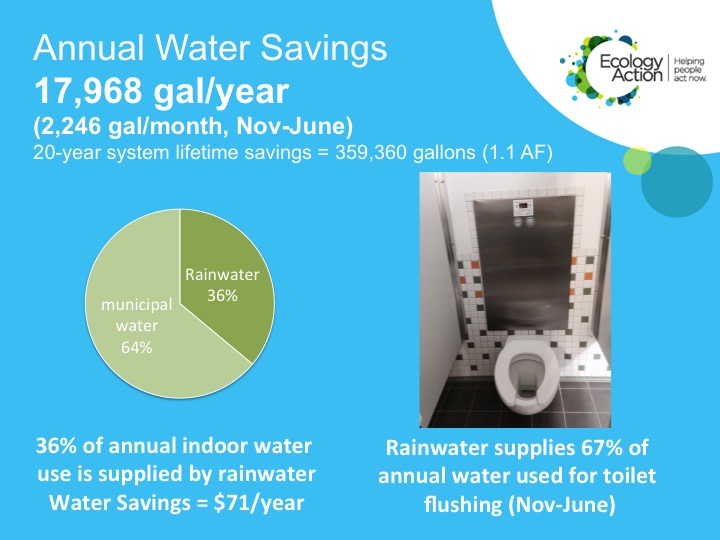
CHARTSCH_CIS_16
In 2016, Marina Coast Water District delivered commercial water (Tier 1) at $2.97/ccf
